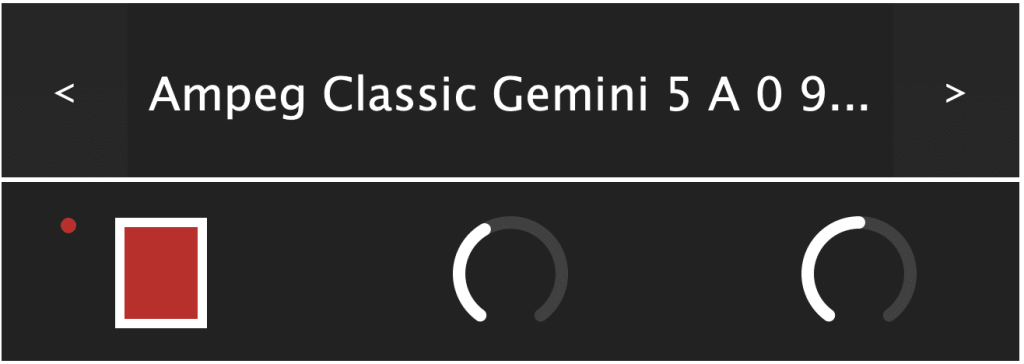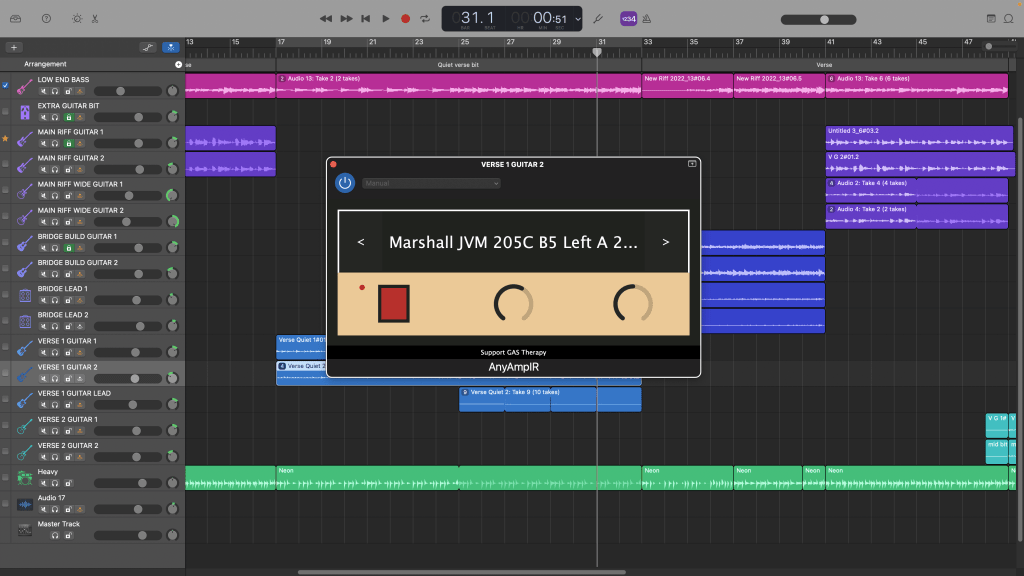Guitarists, this one’s for you. Michael Mon AKA GAS Therapy just released a free guitar cabinet IR loader plugin called AnyAmpIR for Windows and macOS (also available on iOS for $4.99/£4.99).
There is no shortage of decent free guitar amp sims out there, so this one needs to do something pretty special to stand out. Eschewing all but the most basic of controls, AnyAmpIR keeps things incredibly simple.
The goal of AnyAmpIR is pretty straightforward – it aims to provide any amp you want with minimal fuss.

What Does It Do?
So, what does AnyAmpIR actually do? Well, it’s a simple cabinet IR loader that’s got some sweet functionality to make loading and browsing impulse responses way faster.
And just in case you’re not familiar with the term, an Impulse Response (IR) is basically a sonic snapshot of an amplifier setup. Think of it like a polaroid picture that captures the exact sound of your amp in that moment, including the microphone placement, speaker sound, pedals, rack-mounted gear, and room sound.
The interface consists of just three controls – the left button loads the IR file from your computer, the center knob lets you browse all the IRs in the original file’s folder, and the right knob controls the output volume.
Plus, the top section of the interface shows the loaded IR filename and lets you select the next and previous IR using the left and right arrows.

A lovely extra touch here is that AnyAmpIR actually scans the loaded IR’s filename to detect terms that resemble popular guitar amps. And get this – the GUI will automatically change to represent the captured cabinet depending on the loaded IR.
So if your IR filename contains the word “Fender,” the GUI will update to look like a Fender Twin amp. Or ‘Finder”, as Michael has wisely chosen to tweak the brand names of displayed amp models to avoid any copyright wrangling.
Where’s the Distortion?
You may have noticed AnyAmpIR’s complete lack of distortion channel. That’s intentional. Michael believes that the amp’s distortion isn’t important at all and that you can replace it with any distortion and a set of IRs. It’s an interesting approach that will probably result in more unique and interesting results than if he’d slapped a stock sounding distortion effect onto the plugin.
You can find out more about Michael’s opinion on this via the video below.
All in all, this is a really simple way to recreate many popular guitar sounds through use of readily available IRs. I’d highly recommend giving AnyAmpIR a whirl yourself.
You can find out more about AnyAmpIR right here.
